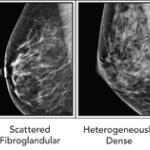In the spirit of Breast Cancer awareness month and promoting women’s health, we are excited to have had Dr.
breast cancer
What goes up must come down. There is no top without a bottom. Two sides to every coin. No front without a back. A lid without a pot. My cliche list is endless. So, I will stop torturing you.
Breast cancer is the second most commonly diagnosed cancer among women (second to skin cancer) accounting for 29% of newly diagnosed cancers.
Among young women with breast cancer, the testing rates for BRCA mutation are increasing, according to research





